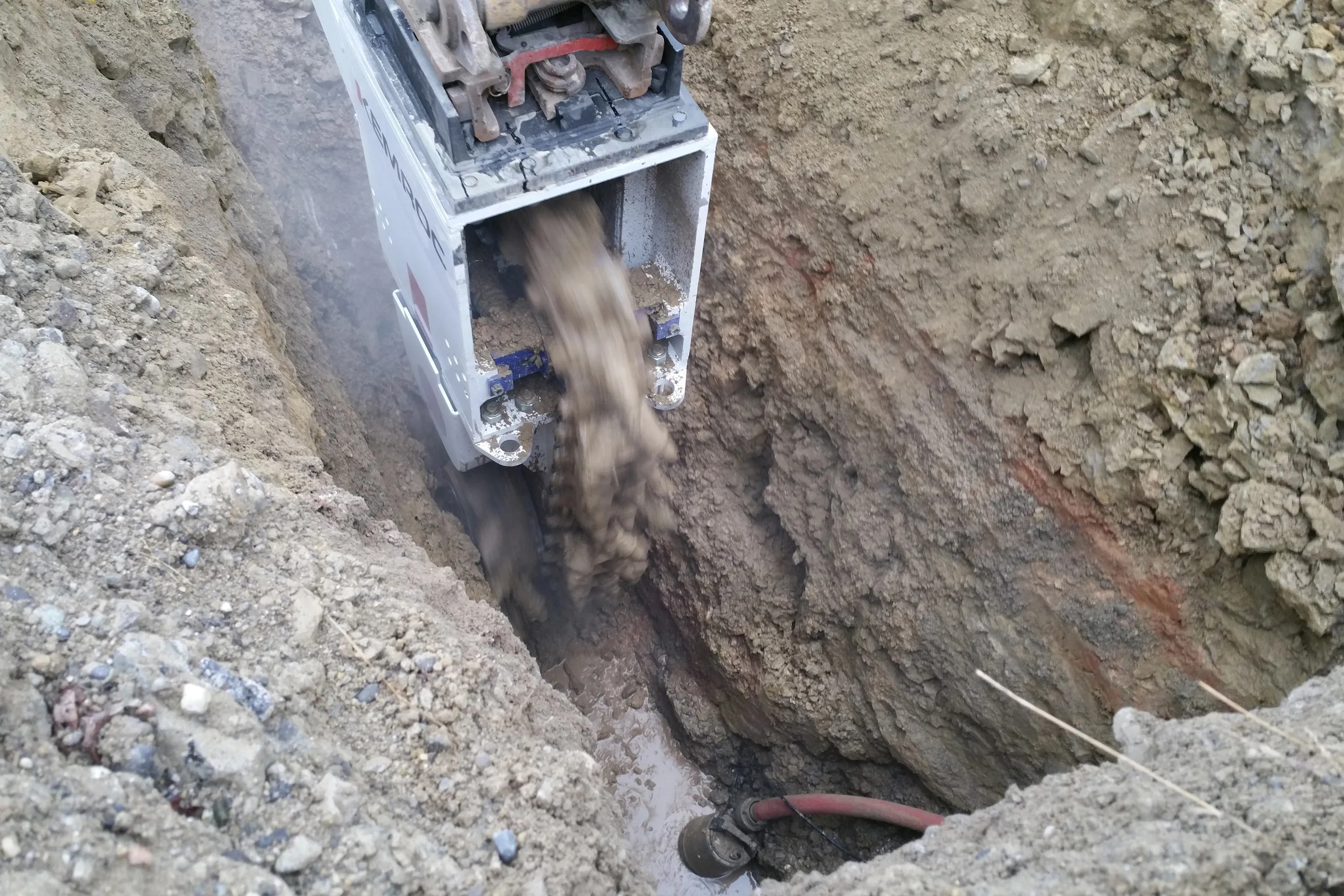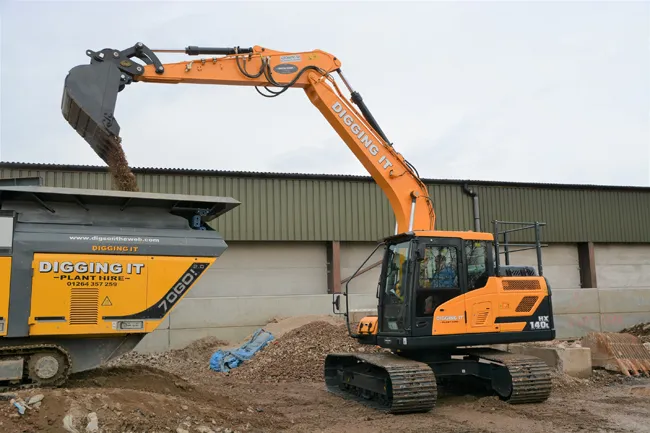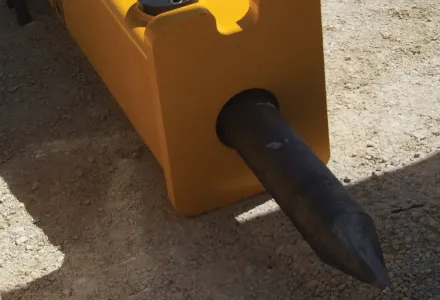
Swiss construction company Gubler, however, used a
With an EK 100 chain cutter mounted on their 22tonne excavator, Gubler excavated the foundations, footings and service trenches in the typical local molasse rock. The project is a large residential complex and parking area in the town of Mettmenstetten near Zurich. Work was done with speed and accuracy, according to the company. The job was also completed without creating noise or vibration to annoy people living nearby.
The overburden contains boulders until they hit bedrock. Kemroc’s EK (Erkator) range of chain cutter attachments includes a cutter chain with round attack picks that runs between two cutter drums. This allows the attachment to excavate narrow trenches exactly to the width required; there is no gap between the cutter drums which requires standard types of drum cutter to operate with a sideways swinging motion. Compared to a lengthways drum cutter, a chain cutter operates a lot more smoothly and with lower cost for consumables as well as less wear and tear on the machine.
At the job site in Mettmenstetten, Gubler excavated 2,500m³ of material while excavating 60cm-wide trenches with depths up to 5m. “The EK 100 enabled us to keep the trench width to specification while maintaining vertical side walls resulting in significant savings in time and transport costs for the removal of broken material,” said Markus Gubler, managing director of the company.
“In addition, we were able to use the EK 100 on our 22tonne excavator. If we had to use a breaker we would have had to go up to a larger size excavator. A large part of the excavation was completed in 170 working hours and we also achieved significant savings in fuel costs.”
At the same time, within an area of 4,500m² a total of 120 footings and the perimeter of the underground car park foundations were excavated to within a 5cm variation. “When it came to lining the periphery walls for the underground garage, we were able to save an enormous amount on concrete,” he said.
According to the company’s calculations, the chain cutter covered 50% of its cost on its first job.
“Compared to using a hydraulic breaker which creates noise levels emanating from the job site over 100 dB(A), with the chain cutter it was down to 70 dB(A),” said Gubler.








